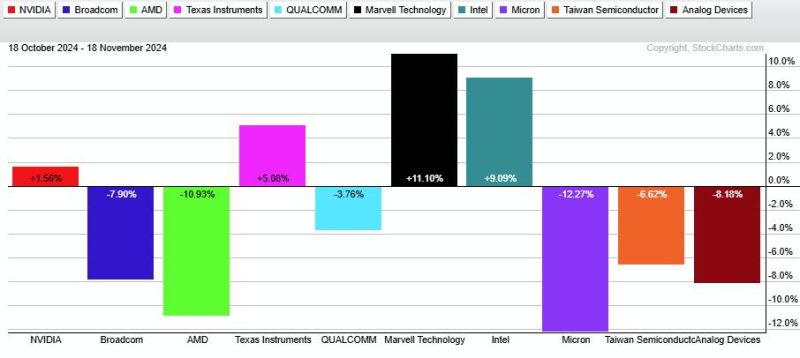In the world of exchange-traded funds (ETFs), two specific semiconductor ETFs have been garnering attention for their varying performances in the market – the VanEck Vectors Semiconductor ETF (SMH) and the iShares PHLX Semiconductor ETF (SOXX). While both funds are designed to track the performance of semiconductor companies, there are distinct differences in their holdings and weighting methodologies that contribute to their contrasting results.
One of the key factors behind the different performances of SMH and SOXX lies in their portfolio compositions. SMH is composed of a diversified mix of semiconductor companies, with a more even distribution of holdings across various market segments. On the other hand, SOXX is more concentrated in its holdings, with a heavier weighting towards top semiconductor giants.
This difference in portfolio composition has played a significant role in determining the resilience of SMH in the face of market fluctuations compared to SOXX. The diversified nature of SMH’s holdings provides a level of insulation against volatility in individual stocks, as any downturn in one company is balanced out by the performance of others in the fund. In contrast, SOXX’s concentrated holdings make it more vulnerable to the performance of a few key companies, leading to higher fluctuations in its overall returns.
Furthermore, the weighting methodologies of SMH and SOXX also contribute to their respective performances. SMH employs a modified market-capitalization methodology, which adjusts the weightings of individual holdings to prevent any single stock from dominating the fund. This approach helps in spreading risk more evenly across the portfolio and minimizes the impact of any underperforming stock on the fund’s overall value.
In contrast, SOXX follows a market-capitalization methodology without any modifications, leading to a more top-heavy structure where a few large-cap companies have a significant influence on the fund’s performance. This lack of diversification in SOXX’s holdings exposes it to higher levels of risk, especially during periods of market instability when the performance of key companies can significantly impact the fund’s returns.
The contrasting performances of SMH and SOXX highlight the importance of portfolio composition and weighting methodologies in determining the resilience and stability of ETFs in the semiconductor sector. Investors seeking exposure to the semiconductor industry should carefully consider these factors and choose funds that align with their risk tolerance and investment objectives. By understanding the nuances of ETFs like SMH and SOXX, investors can make informed decisions that suit their financial goals and preferences.
